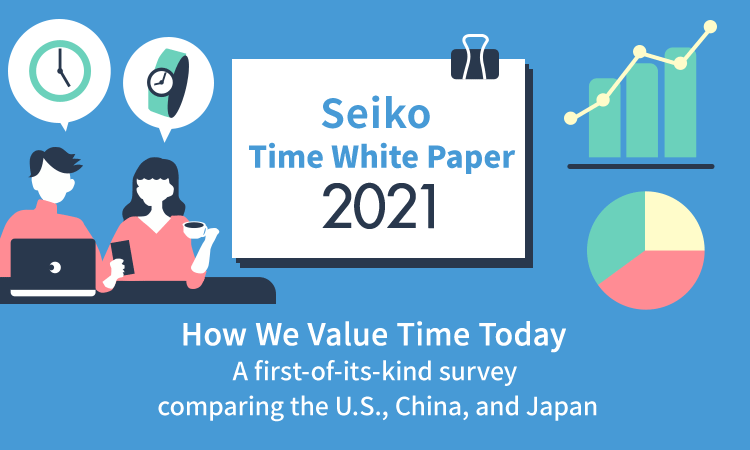

June 10 is known as Time Day in Japan. Since 2017, Seiko Group Corporation (Chairman and Group CEO: Shinji Hattori, head office: Chuo-ku, Tokyo) has released an annual Seiko Time white paper based on surveys that explore how consumers perceive and experience time on Time Day.
As Seiko approaches its 140th anniversary this year, the Company has conducted an awareness survey aimed at consumers in Japan, the U.S., and China to delve more deeply into how we value time today.
A full year has already passed since the Covid-19 pandemic became a global crisis. As the ways in which people spend their time have become more diverse due to significant changes to their personal and professional environments, many people have taken this as an opportunity to rethink how they use and assign value to their time This report compares perceptions of time in the U.S., China, and Japan and investigates the differences among these countries.
Key Points
- Respondents in the U.S. now perceive time as passing extremely fast, at roughly 3.4 times the speed of previous years, compared to 2.03 times in Japan and 1.68 times in China
- U.S. respondents ranked “hobbies/leisure time” as the time they value most, while “sleep/rest” was No. 1 for those in Japan, and “working, doing housework, or studying” was top for those in China
- In a self-assessment of how well people use their time, respondents in China ranked first with 78.4 points, the U.S. was second with 64.5 points, and Japan third with 58.5 points.
Japan Survey
Period
April 28 to May 10, 2021
Method
Internet survey
Target
1,200 total
(600 men and 600 women, with 100 of each in each age decade from teens [age 15-19] to 60s)
Global Survey
Period
May 13 to 21, 2021
Method
Internet survey
Target
120 total, 60 men and 60 women, teens [15-19] to 60s in New York City
120 total, 60 men and 60 women, teens [15-19] to 60s in Shanghai, China
* Percentages are rounded to one decimal place and thus may not necessarily equal exactly 100%. Monetary values are rounded to whole numbers.









